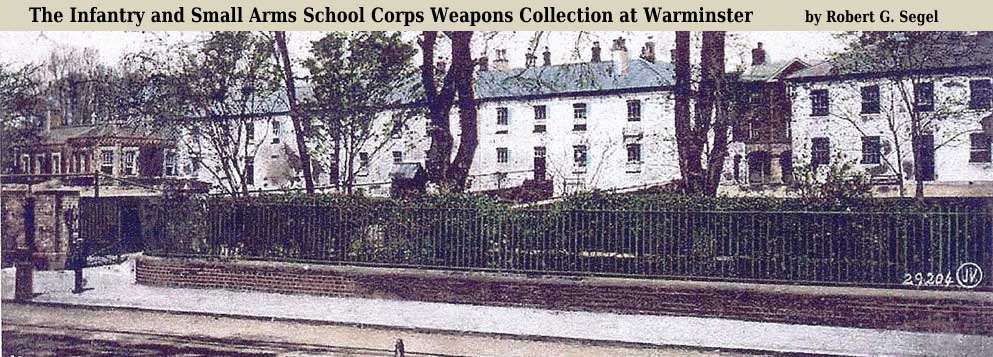Old hand colored postcard of the School of Musketry, Hythe.
The Small Arms School Corps (SASC) is a small corps of the British Army responsible for maintaining the proficiency of the army in the use of small arms, support weapons and range management.
In 1853 when the School of Musketry was formed in Hythe, Kent, a dedicated body of instructors was assembled to teach and improve standards of musketry and the use of the Minie Rifle. This group of instructors was the basis of the School of Musketry. Renamed as the Small Arms School at Hythe in 1919 and together with the Machine Gun School at Netheravon in 1926 the instructors were formed as the Small Arms School Corps. These respective schools at Hythe and Netheravon later became Wings of the School of Infantry.
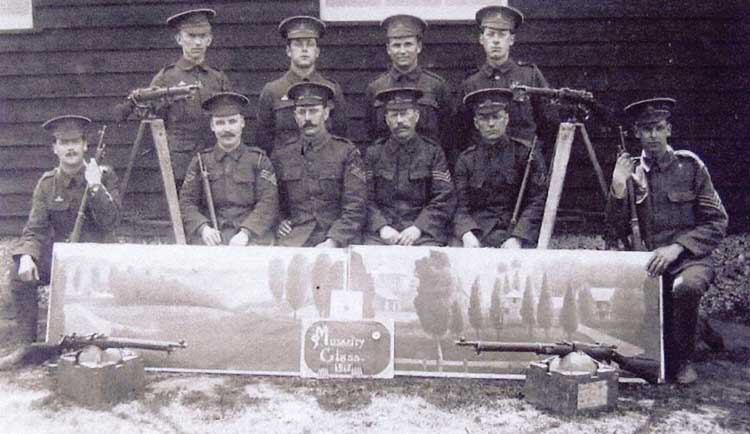
In 1969, the Small Arms School moved from Hythe, Kent to Warminster, Wiltshire where the headquarters of the Small Arms School Corps remains to this day.
The Small Arms School Corps Badge
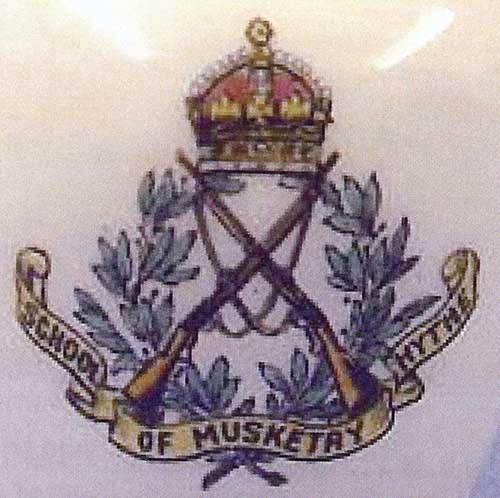
The original badge of the School was crossed rifles surmounted by a crown. In 1929 the present badge was introduced, consisting of crossed rifles and a Vickers machine gun, surmounted by a crown and surrounded by a laurel wreath. This reflected the change in name adopted for the School at Hythe in 1919 and for the expanding School, which now included Netheravon, that took on responsibility for the Vickers machine gun. The title Small Arms School Corps came into being at this time. The current design of the badge has remained unchanged except that depending on the current reign, the badge was surmounted by a King’s crown (prior to 1952) or a Queen’s crown (since 1952).
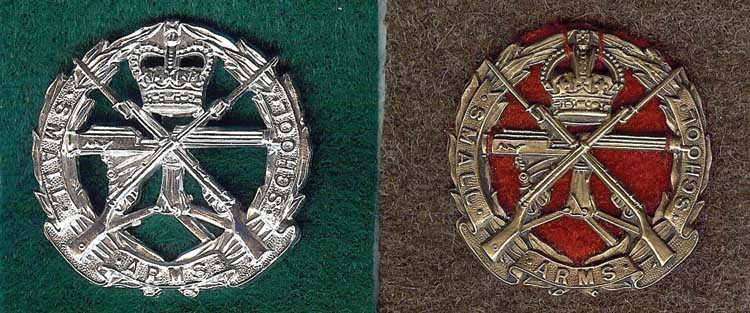
The Collection
Regimental officers holding appointments in these establishments and visitors have contributed weapons, some of which were captured or from private collections, and many others were donated by foreign armies. Very few weapons have been purchased specifically for the collection. The assembling of such a collection is probably best described as the result of the enthusiasm for weaponry of many individuals covering a period of more than 150 years.
Today this collection of over 2,100 weapon exhibits continues to exist as a serious training and teaching facility within the Infantry Training Base, as well as providing examples of major historical firearms development up to the present time. The collecting and receipt of weapon exhibits is an on-going commitment, with many sources providing contributions.
The collection is divided up into specific rooms showcasing the array and types of weapons on display.
The Pistol Room
The Pistol Room collection is made up of approximately 300 revolvers and pistols with numbers varying according to display emphasis.
The weapons date from circa 1640, a 3-chambered Dutch flintlock revolver, through to a pair of Napoleon’s pistols (by Le Page of Paris), and thence via percussion, pinfire and rimfire weapons to modern arms.
Exhibits include trial weapons within the historical sequence varying from the Babbett-Fairfax ‘Mars’ 8.5mm caliber of 1902 to the Smith & Wesson .357 Magnum.
The Rifle Room
The Rifle Room contains a display of long-arms and rifles which date from the 16th Century to the present time. The bulk of the weapons, however, date from post 1853 when the School of Musketry began and continued with the user testing of infantry weapons. It is possible to walk the length of the room and to identify key weapons used during the campaigns of the British Infantry.
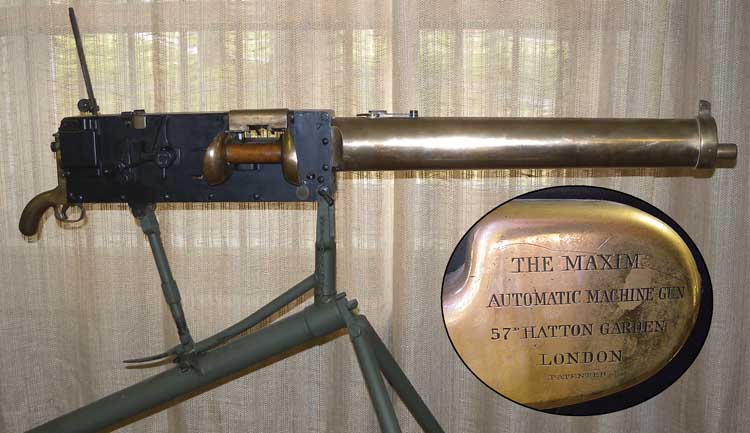
Examples include the Tower musket and the Baker rifle which achieved such success in the hands of Wellington’s infantry in the Peninsular War and at Waterloo. The muzzle loaded Minie and Enfield rifles used in the Crimea. The single breech loading rifle in the form of the Martini-Henry, which met with success and failure during the Zulu War. The magazine rifle – the .303 Short Magazine Lee Enfield (SMLE) with its intensive back up training which slowed the German advance at Mons during World War I. The No. 4 Enfield used in NW Europe during 1944 and 1945 and the No. 5 Enfield used during the Malaya emergency. Just to name a few.
The Submachine Gun & Light Machine Gun Room
As you pass from the Pistol Room you enter the machine gun theater. As the name implies, this room contains the Infantry’s magnificent collection of sub and light machine guns. Pride of place must be shared between the collections of Stens and Brens.
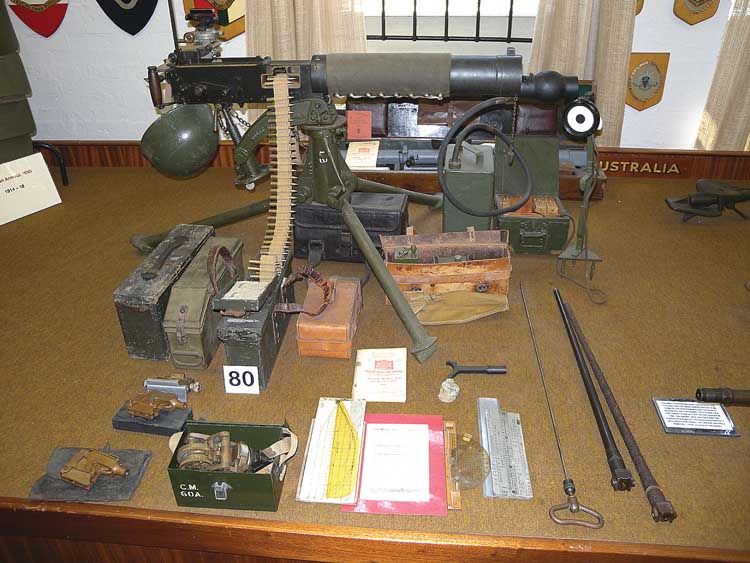
The collection has the first ever Sten gun, serial number T-40/1 indicating its originator, Harold Turpin, the year, 1940, and the serial number 1. This gun was actually made by Harold Turpin at the Philips Radio Works at Perivale during December 1940 and January 1941. There follows the complete series from the Singer Sewing Machines production Mk 1 version to the last silenced Mk 6.
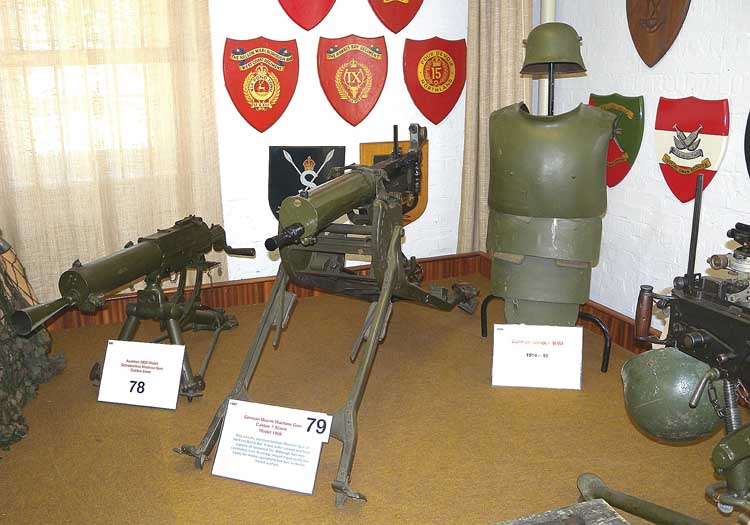
Also on display is the complete series of Patchett/Sterling submachine guns from the earliest prototype to the last military L34 silenced gun. The also have, what they believe, is the first Thompson gun purchased from the USA for 45 pounds, up front, in gold, as British currency was virtually worthless in 1940. The Thompson was used by the Small Arms School to evaluate the training program for the remaining 299,999 that had been ordered. Alas, of the 299,999 ordered, some 200,000 still lay at the bottom of the Atlantic. Also in the collection is a Reising SMG serial number 25 and a .30 cal. M1 Carbine serial number 11.
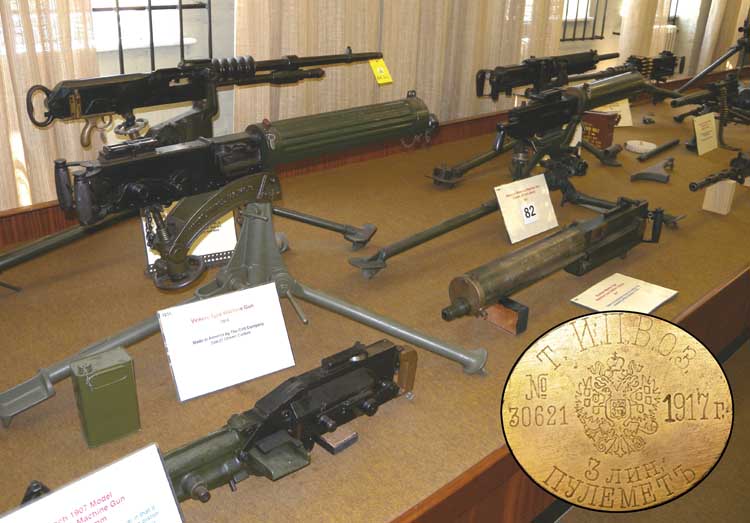
Besides the array of sub and light machine guns from around the world, of special note is the magnificent Bren gun collection. Without doubt, the most famous gun ever to grace the ranks of the British Army and equally without doubt the longest serving weapon in the British Army from its introduction in August 1938 until it was finally withdrawn in February 2000. They also have the BRNO ZGB prototype guns number 5 and 12.
The Medium Machine Gun and Mortars Room
This room contains examples of the heavier weapons used at battalion level. These weapons are medium and heavy mortars, medium, heavy and general purpose machine guns and automatic grenade launchers. The room also contains light mortars and flame throwers usually to be found in rifle companies.
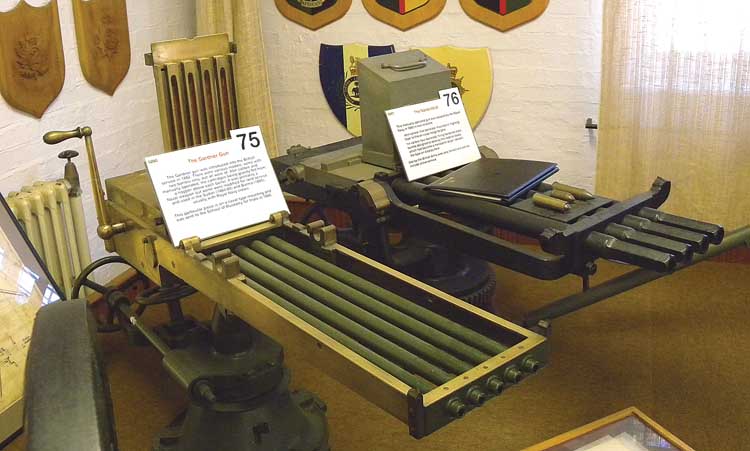
The three most notable mortars are a barrel and projectile from a WWI Stokes 3-inch mortar. Russian 82mm and 120mm WWII mortars and the British post-WWII 81mm mortar.
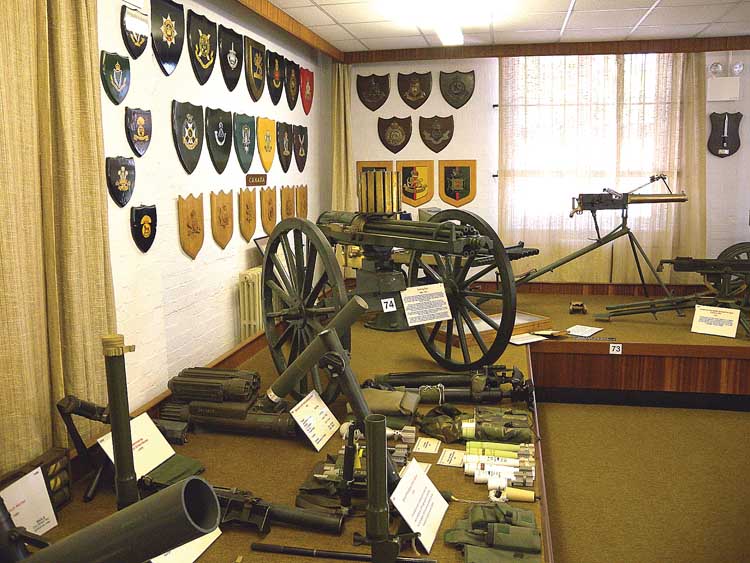
A fine selection of machine guns include a Gatling, Gardner and Nordenfelt multi-barrel manually operated machine guns as well as an early Maxim, Vickers, Browning etc.


The Anti-Tank Weapons Room
With the development of tanks during WWI and the corresponding armor-piercing bullet, the relationship of armored vehicles and weapons to defeat them has created an escalation of ever more sophisticated hardware, ammunition and techniques that are portrayed in the collection.
The Anti-Tank room provides a selection of weapons and ammunition which cover individual, section and supporting anti-armor weaponry. From early anti-tank rifles such as the German Mauser of 1918 and Boys Anti-Tank Rifle to the latest .50 caliber Barrett Anti-Material Rifle.
Some well known weapons on display include the PIAT of WWII with hollow charge ammunition, the 2, 6, and 17 pounder guns and the recoilless 120mm BAT to WOMBAT series with High Explosive Squash Head (HESH) ammunition. Of course the RPG series are also included.
Visit
Visits to view the Small Arms School Corps weapons collection is arranged by appointment only. Standing tours are each Wednesday from 1000 to 1215 hours and are limited to 20 visitors. To join a tour phone 01985 222487 when full details will be provided. Other visits are, again, by appointment only.

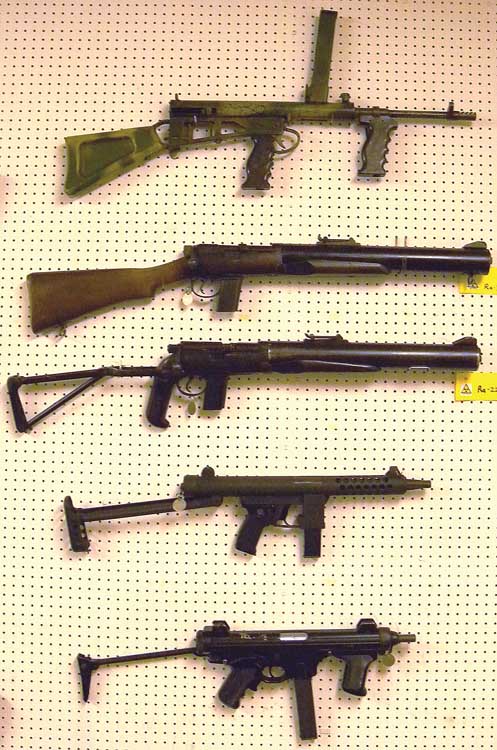
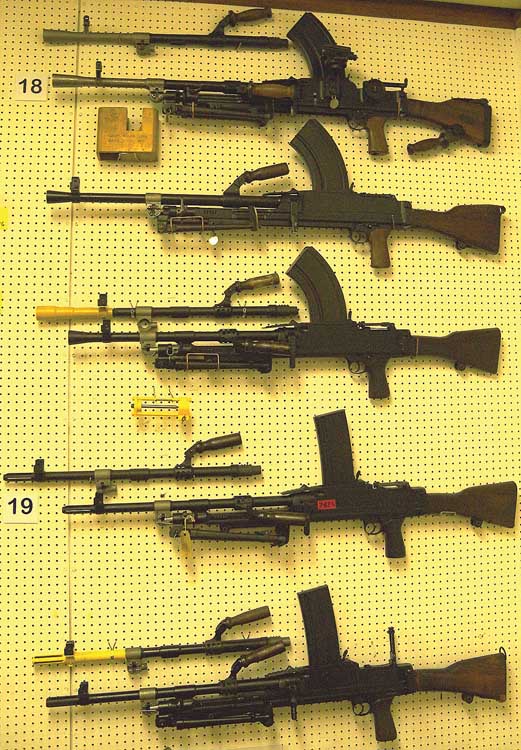
Contact:
Officer IC Infantry & SASC
Weapons Collection
HQ SASC
Land Warfare Center
Warminster, Wiltshire BA12 0DJ
Telephone: 01985 222487
| This article first appeared in Small Arms Review V15N1 (October 2011) |



